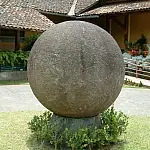What Caused the Fall of the Mayan CivilisationWhy did the Mayan Civilisation, a remarkably sophisticated civilisation, suddenly collapse sometime during the 8th or 9th centuries?
Much of Maya history is shrouded in mystery. It is believed today that the Mayan people began to settle in the Yucatan area of what is now Mexico between 2600 BC and 1800 BC. Between the late 8th century to the end of the 9th century, something unknown happened to shake the Mayan civilisation to its foundations.
Who Were the Mayans

The ancient Mayan civilisation was based around city-states. Some of the major cities were Tikal, Copan, Chunchucmil, Bonampak, and Palenque. The Mayans dominated what is now the Mexican states of Chiapas, Tabasco, and most of the Yucatan. The empire also stretched through northern Central America, including Guatemala, El Salvador, western Honduras, and Belize. Chronologically, the Mayan civilisation sits between the earlier Olmec and later Aztec civilisations.
The Mayan civilisation peaked between 250 AD and 800 AD. Long-distance trade was developed, and the famous Mayan pyramid temples were built. The ancient Mayan people continued to develop the art, maths and science that they are famous for even today. At its height, the Mayan civilisation consisted of over 19 million people.

The Maya were intellectually advanced. They had a strong grasp of mathematics and astronomy, which they used to align their pyramids and temples with the precession of planets and the solar equinoxes. They used the only known written script in Mesoamerica, a bizarre-looking set of characters known as Maya hieroglyphs.
Why did the Mayan Civilisation Mysteriously Disappear?
Why did the Maya, a remarkably sophisticated civilisation, suddenly collapse sometime during the 8th or 9th centuries?
Around 850 AD, after centuries of prosperity and dominance, the Maya began to abandon their great cities, one after another. In less than 200 years, the cities in the southern lowlands were abandoned and the Mayan civilisation had slumped to a fraction of its former glory. By 900 AD the Mayan civilisation in that region had collapsed.
Archaeologists still cannot agree on what caused the Mayan collapse. There are abundant theories about what finished off the Maya ranging from invasion, civil war, collapsing trade routes, droughts, natural disasters and even alien abductions have been put forward.
There is no satisfactory explanation for the Mayan collapse. If there had been a war or invasion there would be some kind of records and archaeological records. Collapsing trade routes would also have some evidence in the form of migration.
One theory that has been gaining ground in recent years is extreme drought. Climate records from the analysis of cave formations show that during this time the Maya area had received relatively high rainfall. But the same records show that starting in about 820 AD, the region was ravaged by 95 years of punctuated droughts, some of which lasted for decades.
Rice University professor Andre Droxler's team analysed sediment found in the "Great Blue Hole," a 410-foot-deep sinkhole in the middle of Lighthouse Reef. Over thousands of years, runoff from rivers and streams during periods of ample rainfall deposited layers of sediment in the Blue Hole's lagoon, offering scientists a geological timeline to examine. Droxler's team found that the sediment in the lagoon indicated periods of low rainfall during the times when the Mayas, for the most part, disappeared.
But attractive as the drought explanation is, one piece of evidence has been standing in its way. While most Maya cities declined as the climate dried, not all of them did. In fact in the Yucatan peninsula to the north, Chichen Itza flourished. If the South was permanently crippled by the drought, critics argue, then why wasn't the North?
Archaeologists rely on calendar inscriptions on stone monuments, stylistic analysis of the Maya's ornate ceramics, and radiocarbon dates from organic materials. This is because written records were destroyed during colonial times at the order of Catholic priests. The Spanish burned all but four Mayan books.
Archaeologists analysed cities from the north, south and central regions. From stone calendar inscriptions and radiocarbon dating, they constructed a broad picture of what times the northern Maya cities had been active, and the times when they each might have fallen into decline.
These findings show that the north had suffered a decline during a time of drought, in fact, it had suffered two of them. The archaeologists found that there was a 70% decline in stone calendar inscriptions in the second half of the 9th Century. This same pattern of decline is also echoed in radiocarbon dates across the northern Maya region, which indicates that wooden construction also dwindled during the same period. The archaeologists believe that this decline in creative activity shows that collapse was underway in the north. The north certainly fared better than the south during the 9th Century, but these new findings suggest that the region nevertheless suffered a significant decline.
With these findings, it looks even more likely that climate change played a significant role in the Mayan civilisation's downfall.












